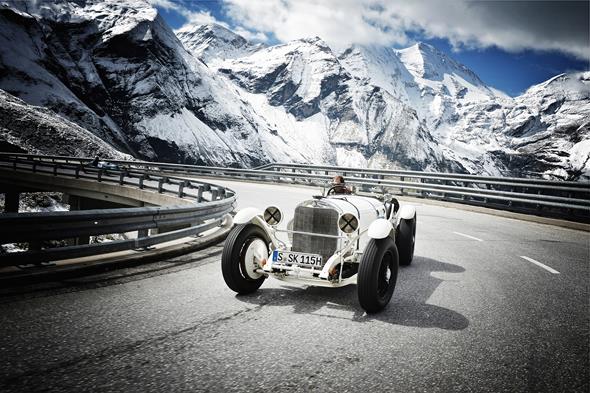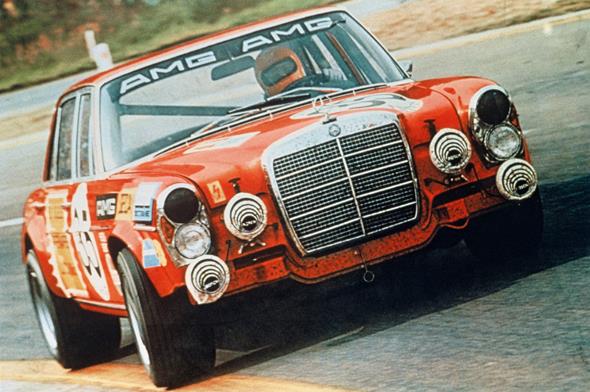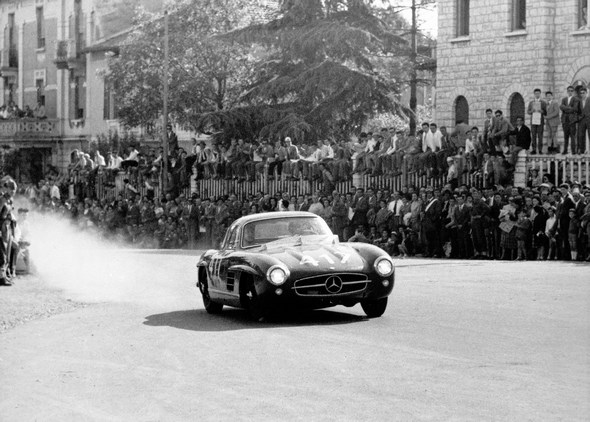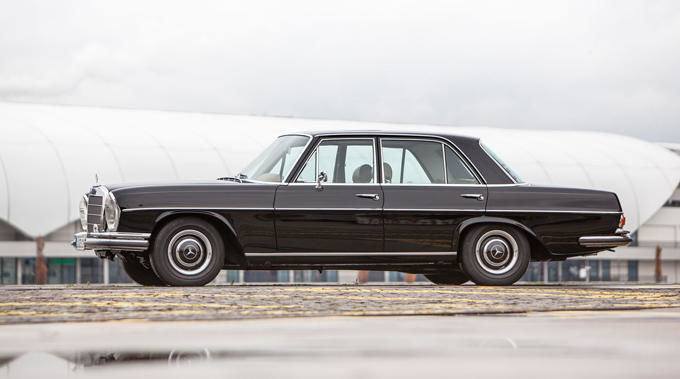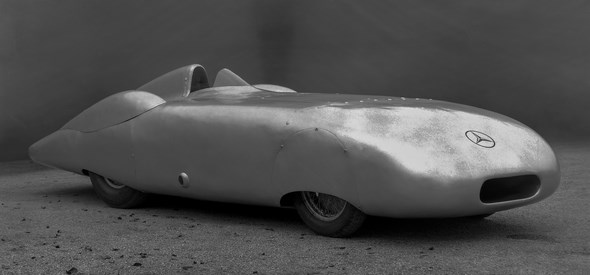Mercedes-Benz SSK and AMG 300 SEL 6.8 at the premiere of the “International Mountain Award Rossfeld Berchtesgaden”
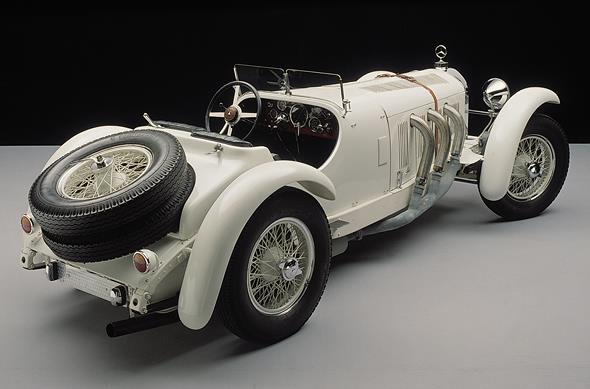
- SSK: a reminder of the era of the Salzberg and Rossfeld races
- AMG 300 SEL 6.8: a fascination for motorsport of the modern era
- Prominent racing drivers take to the starting line: Jochen Mass and Karl Wendlinger
Stuttgart – To mark the premiere of the International Edelweiss Mountain Award Rossfeld Berchtesgaden (27 to 29 September 2013), Jochen Mass will be driving a Mercedes-Benz SSK (W 06300 6.8) and Karl Wendlinger will take to the wheel of the AMG 300 SEL 6.8, the “Red Giant”. Both models are equipped with some brilliant motorsport features.
The International Edelweiss Mountain Award Rossfeld Berchtesgaden is an event which takes place on the Rossfeld panoramic pass road between Berchtesgaden and Salzburg and harks back to the heyday of hill climb racing in the middle of the last century.
It was a time when the Mercedes-Benz star shone brightly in the various international competitions in this discipline: Rudolf Caracciola and Hans Stuck won the European Hill Climbing Championship for sports cars three times in the years 1930 to 1932.
Caracciola, lead driver at the time for the Mercedes-Benz racing department, was European Hill Climbing Champion in 1930 and 1931, while in 1932 the title went to Stuck, who became champion of the Alps in a Mercedes-Benz SSKL. As a representative of this era, Mercedes-Benz Classic is sending the SSK to the International Edelweiss Mountain Award event with Jochen Mass at the wheel.
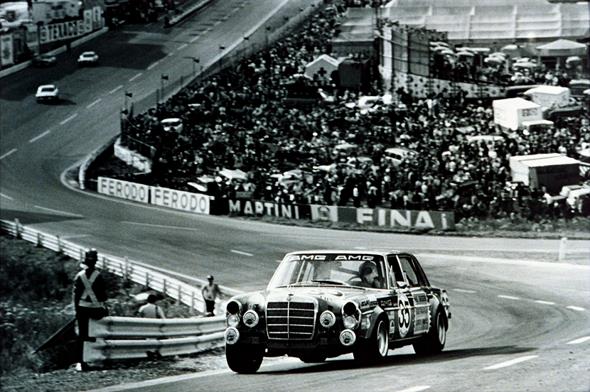
The second vehicle, the AMG 300 SEL 6.8 (W 109) to be driven by Karl Wendlinger, throws the spotlight on a younger facet of motorsport history. At the same time it is also a shining example of the history of the AMG brand. In 1971 the red-painted racing touring car celebrated its greatest triumph at the 24 Hours of Spa-Francorchamps.
Rekindling memories of golden eras
Hill climbs were first staged on the gravel track that runs from Berchtesgaden to Obersalzberg in the years 1925 to 1928. The race, for cars and motorcycles, became known as the Salzberg race. The Rossfeld race marked a revival of this tradition between the 1950s and the 1970s. Jochen Mass was one of those who took part in the race, in 1969 and then again in 1971.
In those days, the race also counted as a heat towards the European Hill Climbing Championship. “The Rossfeld has always had a very particular attraction for me”, says the Mercedes-Benz Classic brand ambassador today of this historic route. “It brings together landscape and motor racing in a very special way.”
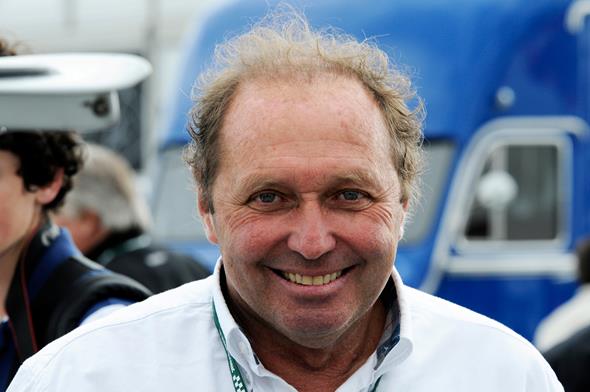
The International Edelweiss Mountain Award Rossfeld Berchtesgaden 2013 harks back to these two golden eras in the history of hill climb racing. The premiere begins on the Friday (27 September) with the scrutineering session and presentation of the vehicles in Berchtesgaden.
The practice runs follow on the Saturday (28 September). The contest for the Mountain Award itself finally takes place on the Sunday (29 September) in three classification rounds. The event also incorporates an extensive programme of activities based around the fascinating history of the automobile.
The Mercedes-Benz Classic vehicle taking part in the International Edelweiss Mountain Award Rossfeld Berchtesgaden 2013
Mercedes-Benz SSK 27/170/225 PS (W 06 series), 1928
Of all the six-cylinder supercharged sports cars in the Mercedes-Benz S-series, the SSK (W 06) model is the most exclusive and fascinating variant. The letters SSK stand for the German words for Super-Sport-Short, so drawing attention to the shortened wheelbase as well as to the vehicle’s sporty appeal.
Straight away, in the summer of 1928, works racing driver Rudolf Caracciola won the Gabelbach, Schauinsland and Mont Ventoux races at the wheel of the brand-new SSK. In 1930 and 1931, it was again in the SSK that he won the European Hill Climbing Championship.
The lighter and even more powerful version of 1931, also known as the SSKL (Super-Sport-Short-Light), achieved similarly spectacular success. Among its most notable achievements was a win in the legendary 1000-mile “Mille Miglia” race: in 1931 Rudolf Caracciola, in the SSKL, became the first non-Italian driver to claim victory in this challenging road race from Brescia to Rome.
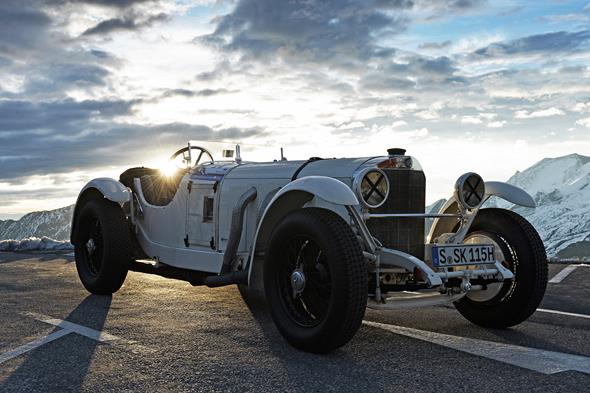
Technical data Mercedes-Benz Type SSK 27/170/225 PS street version
Production period: 1928-1930
Cylinders: 6/in-line
Displacement: 7065 cc
Output: 125 kW (170 hp), with compressor 165 kW (225 hp) at 3300 rpm
Top speed: 192 km/h
AMG 300 SEL 6.8 (W 109), 1971
It was at the wheel of the AMG 300 SEL 6.8 touring race car that Hans Heyer and Clemens Schickentanz won a surprising class victory and second place in the overall classification at the 24-hour race at Spa, Belgium, on 24 July 1971.
The winning car was developed by the then virtually unknown AMG, founded in 1967 by Hans Werner Aufrecht and Erhard Melcher, Großaspach, under the name “Ingenieursbüro, Konstruktion und Versuch zur Entwicklung von Rennmotoren” (Engineering office, Construction and Testing for the Development of Racing Engines). The modified vehicle was based on the Mercedes-Benz 300 SEL 6.3 which, with an output of 250 hp (184 kW), was absolutely unrivalled in its day.
But Aufrecht and Melcher made the fastest German series-production car of the period even more powerful: engine capacity grew from 6330 cc to 6835 cc, and the output of the improved V8 engine increased to 428 hp (315 kW). The win in the race at Spa marked the breakthrough for AMG and was to be followed by further victories.
To this day the car is still known by its nickname, the “Red Giant”. The original car from 1971 no longer exists, but in 2006 the AMG 300 SEL 6.8 was re-developed in a detailed reconstruction. It has been an immensely potent ambassador of Mercedes-AMG history on each of its appearances ever since.
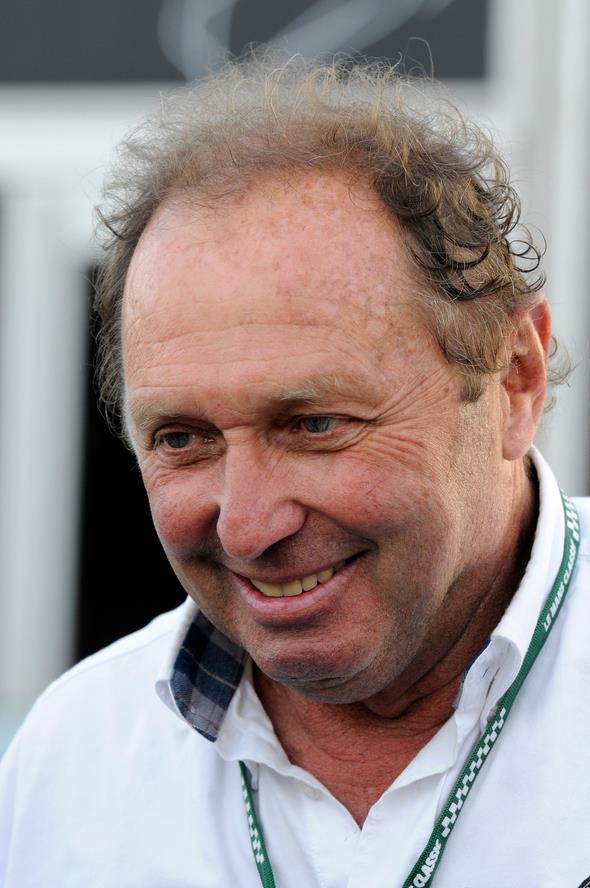
The driver for Mercedes-Benz Classic at the Edelweiss Mountain Award 2013
Jochen Mass
Born 30 September 1946 in Dorfen, near Starnberg, Germany
Jochen Mass, originally a seaman by profession, began his varied career in motorsport in 1968 driving in touring car races for Alfa Romeo and then as a works driver for Ford from 1970 until 1975. During this period (1972) he won the 24-hour endurance race at Spa-Francorchamps. He was involved at the same time in Formula 2 racing (1973) and drove in 105 Formula 1 Grand Prix races (1973/74 for Surtees; 1975 to 1977 for McLaren; 1978 for ATS; 1979/80 for Arrows; 1982 for March).
With the 1985 German Sports Car Championship title under his belt, and following a stint as a works driver for Porsche until 1987, he was recruited as a works driver to the Sauber-Mercedes team. He drove in Group C for this team until 1991.
In the new Silver Arrow, the Sauber-Mercedes C9, Jochen Mass won the 24 Hours of Le Mans together with Manuel Reuter and Stanley Dickens and finished runner-up in the 1989 World Championship. Three years later, Mass became involved in team management for the DTM (German Touring Car Championship, as it then was).
Sir Stirling Moss has described him as “a driver with an enormous feeling for racing cars and great technical knowledge, who is familiar with every era in racing history”. It is therefore hardly surprising that, to this day, Jochen Mass is still to be found behind the wheel for Mercedes-Benz at historical events. Whether the vehicle is a W 125 “Silver Arrow” or a Mercedes-Benz SSK, Jochen Mass knows and drives them all.
Karl Wendlinger
Born 20 December 1968 in Kufstein, Austria
Karl Wendlinger was fourteen when he entered the world of motorsports through kart racing. He went on to win the German Formula 3 Championship in 1989. From 1990 to 1991, the Austrian was part of the Mercedes Junior Team that also included Michael Schumacher and Heinz-Harald Frentzen, and as part of this team he took part in the World Sports Car Championship. In 1991, he made the move to Formula 1.
From 1994 onwards, Wendlinger with Heinz-Harald Frentzen for the Sauber-Mercedes team. He took part in the DTM German Touring Car Championships, International Formula 3000 and the 24 Hours at Le Mans. Some of his key victories on the circuit include the FIA GT Championship (1999), first in the 24 Hours at Le Mans in the GTS class (the same year), overall victory at the 24 Hours at Daytona in 2000, and second place in the 24 Hours at the Nürburgring (2003).
From 2004 to 2011, Karl Wendlinger drove for various teams in the FIA GT Championship, and in 2007 he was runner-up with Jetalliance Racing. Karl Wendlinger has been an AMG brand ambassador and an instructor at the AMG Driving Academy in France since 2012.


